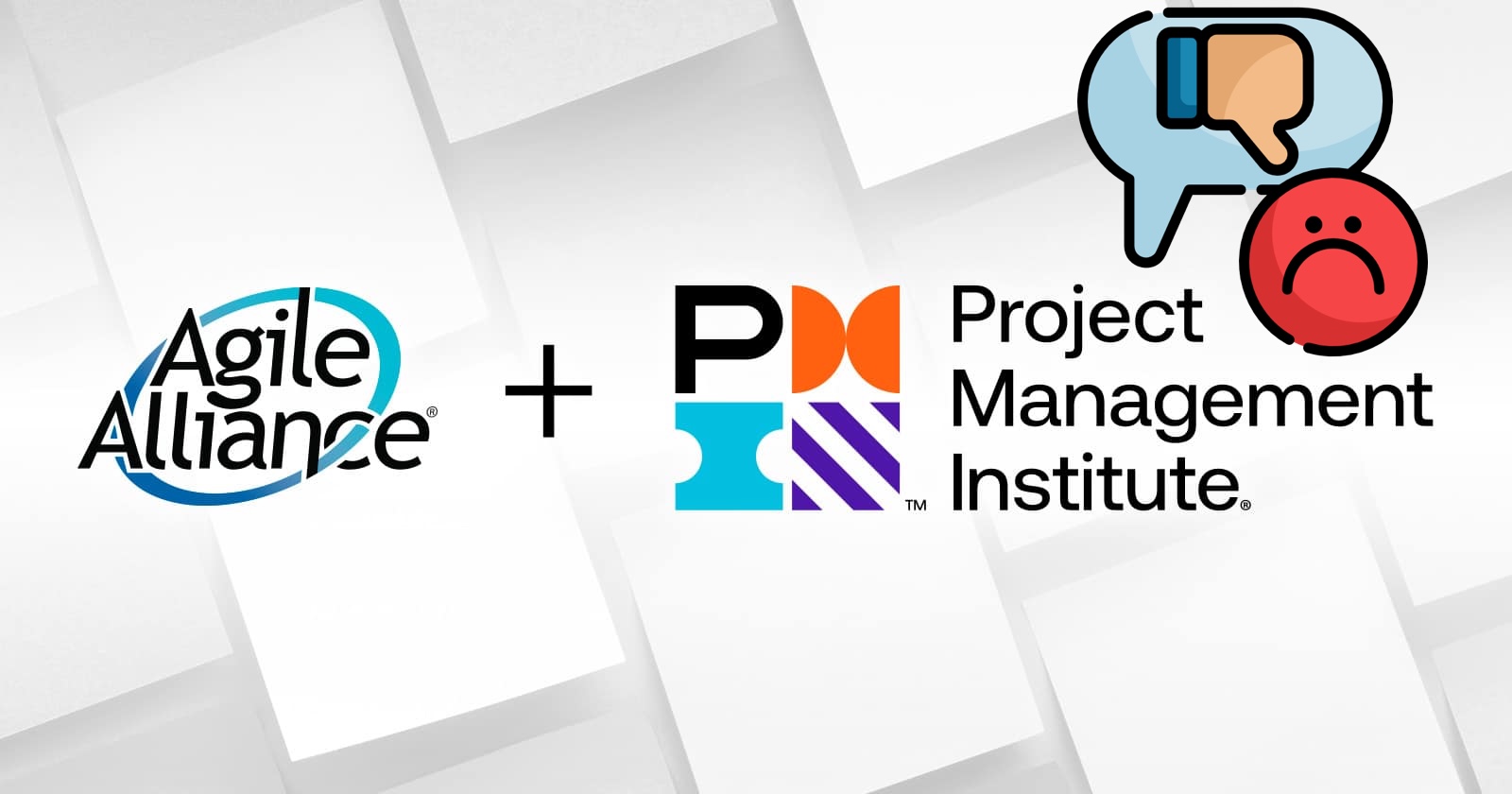On December 31, 2024, the Agile Alliance announced its merger with the Project Management Institute (PMI), rebranding as PMI Agile Alliance. While some may view this as a natural evolution of Agile, for many practitioners, this merger symbolizes the continued erosion of what Agile was intended to be.
Let’s talk about why.
Agility Has Been Hijacked
Agile was never about rigid frameworks or certifications. It was about adaptability, delivering value incrementally, and fostering collaboration. Somewhere along the way, though, “big A Agile” morphed into a bloated industry of certifications, renewal fees, and processes that prioritize compliance over outcomes.
Take SAFe, for instance. While it claims to bring Agile to the enterprise, what it really does is lock organizations into expensive certification schemes, with countless layers of complexity that stifle the very adaptability Agile was meant to foster.
Now, with the PMI Agile Alliance merger, Agile risks being reduced even further to a set of practices and certifications, rather than the mindset it was meant to inspire.
Doing Agile vs. Being Agile
This shift has created a stark divide between doing Agile and being Agile.
• Doing Agile is about following frameworks to the letter: running standups at the same time every day, meticulously adhering to Scrum artifacts, or ticking boxes in a SAFe playbook.
• Being Agile, on the other hand, is about embracing the values and principles of Agile. It’s about trust, relationships, and delivering value—not about rigid processes.
The difference between the two can be illustrated by the visual below (source: SHIFT314):

As the image shows, “doing Agile” provides some benefits, such as improved visibility and reduced risk. But the real gains—like customer delight, joy at work, and continuous learning—come from being Agile. This requires a shift in mindset, not just the implementation of ceremonies or frameworks.
Josh Anderson’s concept of the Agile Donut (link) adds another layer to this conversation. Instead of rigid, hierarchical scaling frameworks, Anderson advocates for decentralized agility, where teams retain autonomy but align on shared values and outcomes. This approach highlights what Agile scaling should be: a system that fosters adaptability and collaboration rather than imposing top-down control.
Certifications Are Killing Agility
One of the biggest contributors to Agile’s derailment is the rise of certifications. What started as a way to help practitioners understand the basics of Agile has turned into a full-blown industry designed to generate profit.
SAFe is a prime example, charging hefty fees for certifications and even more for annual renewals. These certifications don’t make teams Agile—they make individuals compliant with a framework. The PMI Agile Alliance merger will likely further reinforce this trend, embedding Agile into PMI’s process-heavy approach to project management and making it even harder to separate agility from bureaucracy.
That said, certifications and courses aren’t inherently bad. They can provide valuable tools for your Agile toolbox—ways to explore different approaches, frameworks, and techniques. These aren’t one-size-fits-all solutions, but rather a means to understand how to pragmatically apply various methods to meet the needs of your unique situation. When used appropriately, the concepts learned from these programs can serve as stepping stones, guiding teams toward better ways of working.
However, the danger lies in treating certifications as an end goal rather than a means to an end. Agile isn’t about blindly following “best practices” because, quite frankly, there’s no such thing. What works in one context might fail miserably in another. True agility requires understanding your environment, adapting thoughtfully, and applying the right tools at the right time.
As Anderson points out, true Agile scaling doesn’t require certifications or excessive frameworks. It requires trust, shared goals, and a commitment to value-driven delivery. Certifications might look good on a resume, but they don’t teach teams how to be Agile. Instead, they should be viewed as one piece of a larger puzzle, helping teams take incremental steps in the right direction when the situation calls for it.
True Agility Can’t Be Bought
Here’s the truth: agility isn’t something you can purchase at a workshop or maintain with annual certification fees. It’s something that’s built through deliberate effort, continuous improvement, and a focus on outcomes over outputs.
Agility is about empowering teams to adapt, delivering value incrementally, and fostering innovation and collaboration. It’s not about SAFe blueprints or PMI-accredited badges. Those things might teach you how to do Agile, but they’ll never teach you how to be Agile.
If we continue down this path of monetizing Agile, we risk losing what made it transformative in the first place: its ability to create environments where teams can thrive and deliver real value.
Conclusion: A Call to Action
The merger of Agile Alliance and PMI should serve as a wake-up call. It’s a reminder that the Agile community needs to refocus on what matters: trust, collaboration, and delivering value.
As practitioners and leaders, we must reject the cookie-cutter frameworks and certifications that prioritize profit over progress. Instead, we should double down on fostering true agility—helping teams embrace the principles of adaptability, incremental improvement, and human-centered collaboration.
Let’s remember that Agile isn’t about the frameworks we follow but the mindset we adopt. Are you ready to move beyond doing Agile and start being Agile?
Share your thoughts in the comments to join the discussion on DeliveryEnablement.com.


Leave a Reply